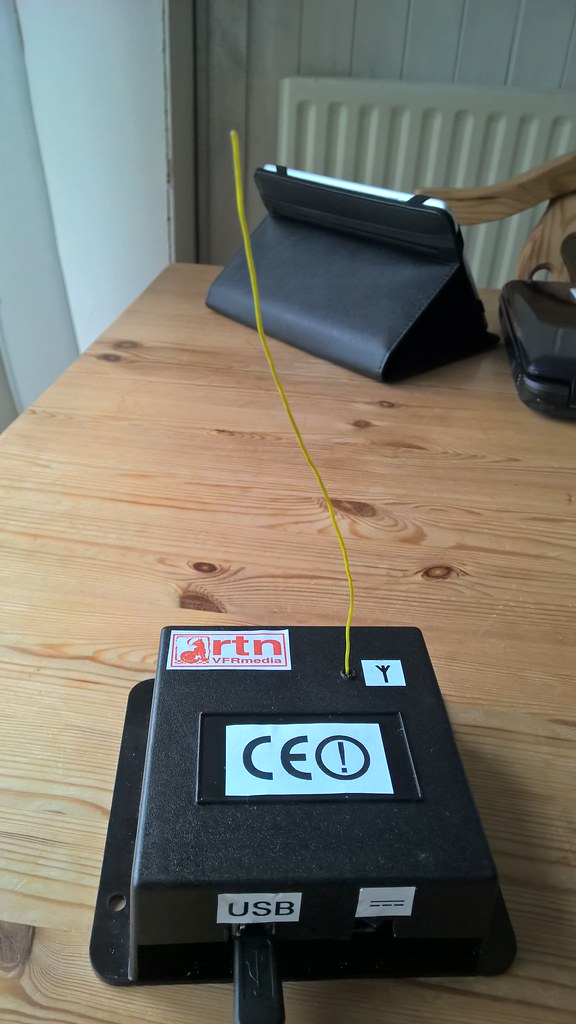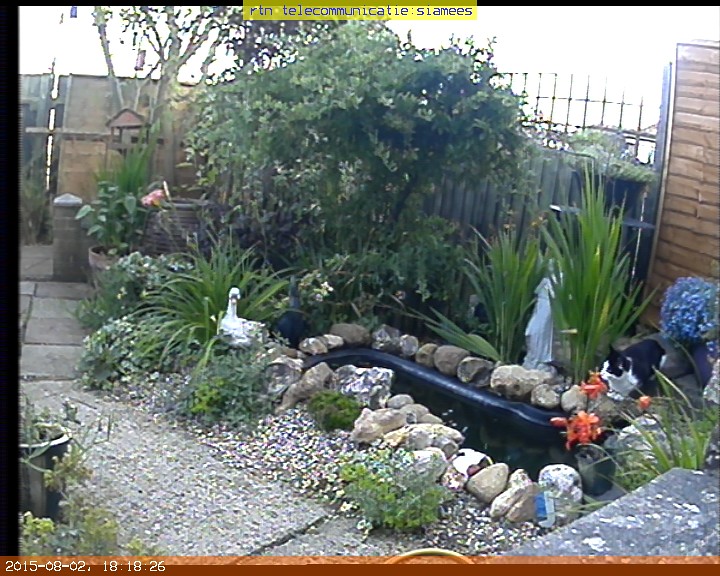- This topic has 1 reply, 1 voice, and was last updated November 10, 2015 at 10:57 am by General Lighting.
-
AuthorPosts
-
November 2, 2015 at 9:45 am #1058808
I will write a more detailed post on how I built this transmitter to test pager receivers from home (rather than annoying the night nurses by setting off the call bells repeatedly) but as these DIY radio modules are cheap and popular before I do so thought it worth explaining why you should take care with how they are operated.
the module on a ready built PCB plus the Arduino cost less than €70; whereas a commercial pager TX costs €400!
This is the transmitter:

You may have seen the (!) after the CE mark on other equipments such as wifi routers and some mobiles. TBH as I am not selling the things I do not strictly need to put it on the case and next year the requirement to add it to wireless equipment is being removed, but at present it means “Attention! / Alert! / Achtung! This equipment contains a radio transmitter, that if used incorrectly can cause harmful interference”. (I use it to remind myself to check the frequency it is operating on as my software is modified to allow it to be varied over a wider range).
Last week I had to take a prescription to a doctors surgery 420m away from my house and uphill. Out of curiosity, I put the transmitter high up in a corner of my room (the same upstairs room I was listening to NL radio today). As I was using the same pager frequency for work I left it on the low power of +11dBm (11 mW) – which will work all across my house.
The TX unit can however go to +18dBm (63 mW) and I do not need a site license from Ofcom until it is over +27 dBm (500 mW).

Out of curiosity I connected it to a netbook and linked a VNC console to my mobile phone, and triggered a pager message just outside the surgery. It came through loud and clear! I didn’t of course try this inside as it is generally not a good idea to transmit unknown radio signals in healthcare facilities; but this clearly shows that even this small power goes a long way; if it is a rough signal or something constantly stuck on transmit that can upset a lot of people.
BTW wireless routers are around +23dBm at full power and there are unfortunately loads of dodgy ones around, especially on 2,4 GHz…
November 10, 2015 at 10:57 am #1279221@General Lighting 703495 wrote:
Last week I had to take a prescription to a doctors surgery 420m away from my house and uphill. Out of curiosity, I put the transmitter high up in a corner of my room (the same upstairs room I was listening to NL radio today). As I was using the same pager frequency for work I left it on the low power of +11dBm (11 mW) – which will work all across my house.
The TX unit can however go to +18dBm (63 mW) and I do not need a site license from Ofcom until it is over +27 dBm (500 mW).
[/quote]
a quick addition to this; the device attracted the attention of a Dutch radioamateur, who wanted to know if it can also work at 2400bps (it does) and if it can send more power (it can do that as well, in fact to +20dBm or 100mW)
I double checked the Ofcom rules as to whether I could use the stronger power on the usual pager frequency (as changing the receive frequency has to be done using the 4 buttons on the pager and wipes out the date/time settings).
the same frequencies are shared with some telemetry equipment and radio controlled models). Ofcom’s document is not 100% clear and repeats the allocation 3 times with different powers..

However, I am genuinely building a PIR trigger to monitor the movements of a “circle of cats” that enter my garden; and deter them from pestering the ornamental fish my mum decided to put in the pond (in spite of me warning her the whole street is full of cats). Eventually a similar device will be tested at my work to check for wandering people in some areas.
Coincidentally this one actually encourages/teaches all the others to follow it into the garden – at least 5 others; including a very old cat, the young one shows the old cat where the easier gaps/entry points are.

This will use an 868 Mhz trigger device (which I already have) so I do not yet need to put a big hole through the outside wall for cables; but alarm PIRs open a loop rather than close it – so I also need to build a safeguard circuit to the 868 MHz TX otherwise the cats might claw the loop wire apart and the 868 MHz would be stuck in TX until the batteries ran down; and before that it may overheat and transmit a square wave; that could annoy a lot of people.
it would also serve as a check if 868 MHz is being cut across by the new 4G mobile phones that are on nearby frequencies…
When I get more time I will use the PIR trigger to send pager messages if cats (or other creatures) get into certain areas; activate one or more cameras, and trigger other devices such as LED lamps pointed towards other bits of the garden (so the cats chase them instead of bothering the fish).
If this all works well I can build a larger scale one for work – as this will give the older people freedom to wander yet remain protected.
This should under IR2030 UK count as a “medical and biological application” [other than the bird trackers Ofcom do not specifiy what species are covered by each allocation 😉
these were some of the +20dBM test messages (after all I was encouraged to do this by the Dutch) :laugh_at:

I have since set the power at +14dBM which is just about within the regs for everything (that is the output power of the chip, some is lost in the antenna wire and other inefficiencies)
-
AuthorPosts
- You must be logged in to reply to this topic.
